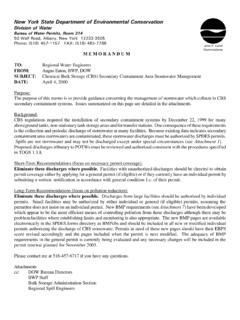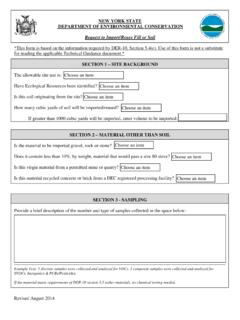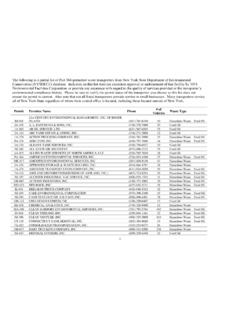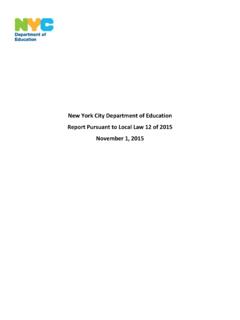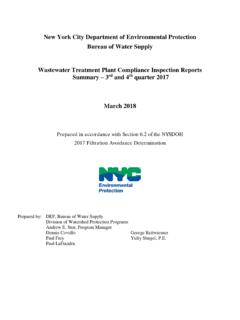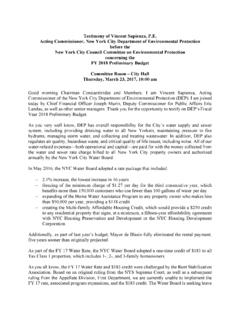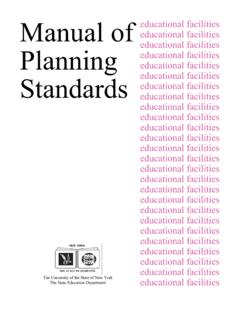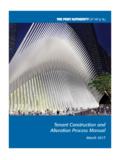Transcription of ASSOCIATION OF TOWNS OF THE STATE OF NEW …
1 ASSOCIATION OF TOWNSOF THE STATE OF NEW YORKTOWN LAW MANUALFor town Supervisors and town BoardsFOREWORDThis publication was initially prepared and distributed in 1962. A second edition wasissued in 1972, and it was periodically updated through the preparation of supplements inthe intervening years until the present. The preparation of this manual has been a largetask in which ASSOCIATION Staff both past and present played a part. Much additionalmaterial and sample forms have been included so as to make it as complete and useful forTown Supervisors and town Boards as to many of the problems Supervisors and town Boards face on a daily basis arecovered in the pages of this manual.
2 town Supervisors and Board members have beengiven important powers and responsibilities. Those responsibilities have increased overthe years as the issues and problems facing our society have grown more complex. Givensome of the more difficult and unusual problems that surface every day, further study andresearch will be necessary and the advice of a competent municipal attorney may manual, as with all publications prepared by the ASSOCIATION for town officers, istown property. It should be passed on to one's successor in office.
3 The cost for thispublication is paid for out of dues each town pays to belong to the ASSOCIATION of materials in this manual have been obtained from speeches, articles andpublications of several new york STATE agencies and departments, and we wish to expressour genuine thanks for the assistance gained from these sources. We particularly wish toacknowledge the work product of the Office of the STATE Comptroller and the Division ofRegulatory Affairs in the Department of Environmental of the principal services of the ASSOCIATION of TOWNS is to answer inquiries fromofficials and our member TOWNS .
4 We are proud of that service and we hope that thismanual will encourage town officers to continue to count on us in solving problems ofconcern to individual member Jeffrey Haber, Executive DirectorJanuary 2004(518) 465 - 7933_____TOWN LAW MANUALC hapter 1 GENERAL PROVISIONS 1-1. Distribution of counties, TOWNS and new york STATE , outside of the City of new york , there are 57 counties. All of theterritory within each of these counties is made up of either TOWNS or cities. There are 932towns in the STATE . Some counties contain as few as three TOWNS ; others, as many as 433 of these TOWNS , there are located one or more villages.
5 There are 556 villagesin the STATE . This means that there are 499 TOWNS which contain no villages. 1-2. Purpose and responsibilities of , TOWNS existed as an arm of the STATE for the purpose of accomplishinglocally, and more conveniently, certain functions of the STATE for the benefit of all itscitizens. TOWNS still continue to perform certain functions for the STATE , such as conductof elections and the keeping of vital statistics. With the growth of TOWNS and consistentwith the needs and demands of their residents for new and expanded local governmentservices, the Legislature recognized the necessity for conferring additional powers ontown governments.
6 These new and expanded powers have allowed TOWNS to meet theservice delivery requirements expected of them more effectively and with greaterefficiency. 1-3. Evolution of are no longer merely political subdivisions of the STATE . They have assumedthe character and capacity of responsible municipal corporations. They are defined in theMunicipal Home Rule Law as one of the four classifications of the STATE 's general purposelocal governments along with counties, cities and villages. Today, it is in the 932 townsof the STATE that nearly 75% of new york STATE 's entire population outside of New YorkCity resides; 45% of the STATE 's population as a whole.
7 The combined population of all ofthe other 61 cities of the STATE is less than 2,000,000 people, or only about 12% of theentire STATE population. In other words, the population of new york STATE TOWNS is almostfour times that of the 61 the more than million people now residing in TOWNS , 2,000,000 camebetween 1950 and 1960, creating a severe challenge for town boards in supplying thesenew residents with the municipal services they needed -- water, sewers, drainage, police,recreation and so on. But our TOWNS met the challenge. A new procedure to initiate theformation and extension of town improvement districts by town board resolution insteadof by the clumsy petition method was developed by the staff of the ASSOCIATION .
8 Thishelped TOWNS substantially in meeting the demands of their new population. The processwas further streamlined in 1995 with a reduction in the STATE Comptroller's involvementin special district formation and extension. Then in the decade 1960-1970, millionmore people moved to our TOWNS . The 1980 and 1990 Censuses showed another 772,000new town residents. And in 2000, a increase meant another 412,000 people, for atotal growth of more than million people, more than doubling town population injust 50 years. The growth rates in town -outside-village areas are even population of the TOWNS of our STATE is greater than the combined populationof Wyoming, Vermont, Rhode Island, North and South Dakota, New Hampshire,Montana, Idaho and Delaware.
9 As a matter of fact, only seven states have populationsgreater than that of the TOWNS of new york STATE -- California, Florida, Illinois, Ohio,Michigan, Pennsylvania and Texas. But it is broadly recognized that TOWNS have acquittedthemselves admirably -- that the town form of local government is one that functionswell, is efficient and economical. TOWNS have met their massive growth problemswithout allowing that increase to affect the quality of life which has attracted so 2 CLASSES OF TOWNS 2-1. town defined; Law 2 defines a town as a "municipal corporation comprising the inhabitantswithin its boundaries, and formed for the purpose of exercising such powers anddischarging such duties of local government and administration of public affairs as havebeen, or, may be conferred or imposed upon it by law.
10 " Note additionally that under theMunicipal Home Rule Law, effective January 1, 1964, the powers of town boards in thearea of local legislation were vastly expanded. (See also Chapter 6, town Legislation.) 2-2. Classes of town of the STATE is, by statutory definition, either a town of the first class ora town of the second class. They are divided into classes according to population asreflected by the latest federal decennial census. Certain TOWNS may optionally become"suburban TOWNS " (see 2-3C below). town which is not a town of the first class is a town of the second class.
